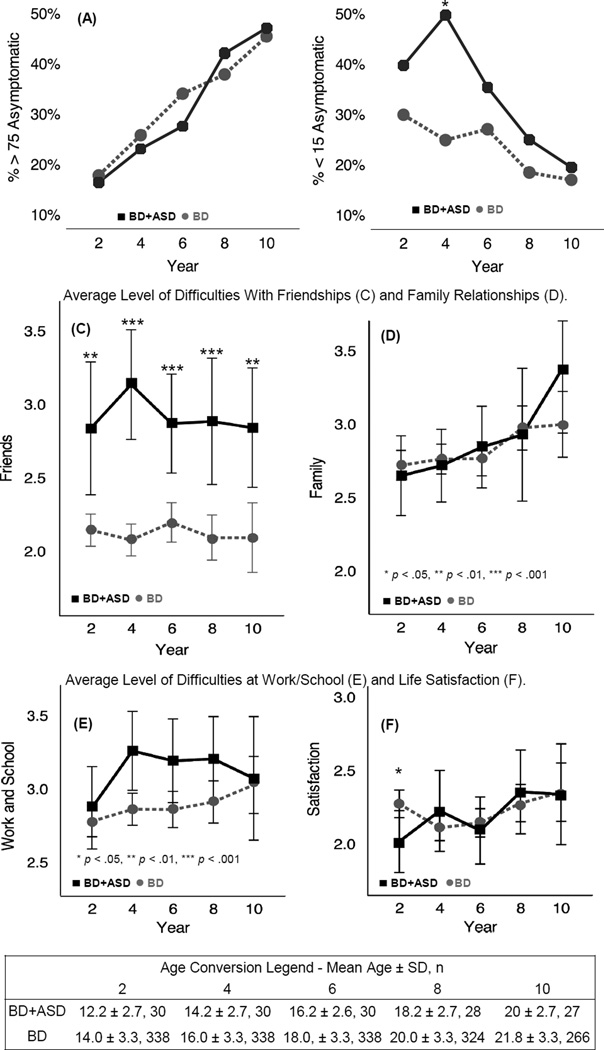Figure 1.
Characterization of clinical state and psychosocial functioning across follow-up. Note: (A) In both groups, the prevalence of predominantly euthymic youth, who spend ≥75% of the interval asymptomatic, increases over time. (B) Compared to youth with bipolar disorder (BD), prevalence of predominantly ill (with <15% of follow-up time asymptomatic) is initially higher, and peaks in BD+ASD youth during years 2–4 of follow-up, then decreases to be comparable. (C) Youth with bipolar and autism spectrum disorders (BD+ASD) have significantly higher impairments in friendships across follow-up. (D) Both groups had consistently moderate levels of impairment in relationships with family members. (E) Moderate impairments are seen in work/school functioning, with transient slight elevations (not significant after controlling for age) in BD+ASD youth during years 2–4. (F) Satisfaction for both groups was similar across follow-up, with the exception of the first 2 years, when it was slightly better (lower score reflects higher satisfaction) for BD+ASD youth. *p < .05, **p < .01, ***p < .001.

